Jan's Working with Windows 10:
Start Up
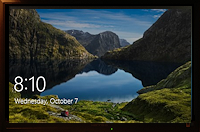 Clearly you can't start doing your lessons until the computer is turned on. Since you might not be able to finish in one session, we need to be sure right away that you know how to properly shut down Windows, too. So
in your first Step-by-Step lessons you will learn how to turn on and shut down your computer. Then you can move on.
Clearly you can't start doing your lessons until the computer is turned on. Since you might not be able to finish in one session, we need to be sure right away that you know how to properly shut down Windows, too. So
in your first Step-by-Step lessons you will learn how to turn on and shut down your computer. Then you can move on.
It's the shutting down part that seems hard for people to do right!
Keep in mind that your computer may not behave as described below. For example, your splash screen might show the logo of the manufacturer or of the business or school that owns it. You may or may not see a logon screen where you have to enter or select a user name and then type in a password.
You do need to be aware, however, of what you might see on other computers. You never know when you will need to use of one those or help out a friend or relative!
| |
Step-by-Step: Start Up |
|
-
Turn on the computer. There is a push button or a toggle switch, probably on the front of a PC, above the keyboard on a laptop, or on the edge of a tablet or smartphone. On a PC there may be a toggle switch on the back and a button on the front! The button will only work when the toggle is On.
(Odds are, your computer is already on if you are reading this on a computer!)Examples of Power buttons:
PC:
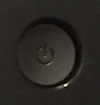

Laptop:
What happens next
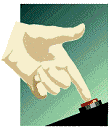 Hardware powers up: The hard drive spins up to working speed unless the computer uses a solid state drive.
Hardware powers up: The hard drive spins up to working speed unless the computer uses a solid state drive.
The power supply fan comes on. The cooling fan for the CPU starts blowing. Other gizmos attached to the computer may power up and make noises, too, like an external drive, printer, or scanner. Altogether it may sound like a whole herd of squirrels waking up.
-
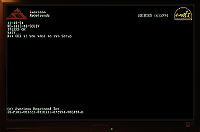 Computer self-check: You may see some text on the screen as
this happens. First the BIOS checks the memory and looks for hardware
parts. Programs that run at startup may print messages to the screen.
Hopefully they just say that all is OK.
Computer self-check: You may see some text on the screen as
this happens. First the BIOS checks the memory and looks for hardware
parts. Programs that run at startup may print messages to the screen.
Hopefully they just say that all is OK.
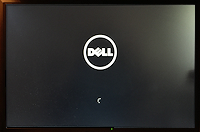 You may see a logo from the computer's manufacturer instead.
You may see a logo from the computer's manufacturer instead.
 Lock screen: Shows at start up and also when there has been no activity for a while.
You can choose an image of your own or even a slide show of your own photos. You might see a school or company logo or the logo of the computer's manufacturer.
Lock screen: Shows at start up and also when there has been no activity for a while.
You can choose an image of your own or even a slide show of your own photos. You might see a school or company logo or the logo of the computer's manufacturer.
-
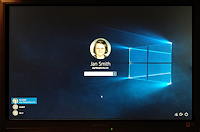 Log on: You will see a logon dialog or a Welcome screen. If your user account has a password, you type in it.
Log on: You will see a logon dialog or a Welcome screen. If your user account has a password, you type in it. You may need to select a different user from the bottom left side. Your school or work place may have their own logon dialog.
Microsoft encourages you to use your Microsoft account logon as your computer logon for your home PC, laptop, or other Windows device. That lets you automatically sync your OneDrive files with the Microsoft OneDrive cloud storage service. A free Microsoft account comes with 5 GB of OneDrive storage. It used to come with 15 GB.Other ways to log on:
- PIN - You set up your own long password that contains only numbers.
- Picture password - Select spots to touch or drag on a picture of your choice.
- Fingerprint - Need a fingerprint scanner attached to the computer.
- Face recognition - Need a Real-Sense 3D camera attached to the computer.

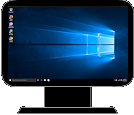 Interface loads: The Desktop
or the Start Screen (for Tablet mode) displays. There may be background applications that load at start-up (like anti-virus, backup, and cloud storage programs).
Interface loads: The Desktop
or the Start Screen (for Tablet mode) displays. There may be background applications that load at start-up (like anti-virus, backup, and cloud storage programs).
Once these finish loading, you are ready to select a program and go to work! Slower after start-up: The more apps you have that run at start-up, the longer it will take for your computer to respond normally. Many apps want to check for updates or new versions at start-up. Others need to synchronize files with online sites. It can take awhile for these tasks to finish. Until then, your computer may respond slower than usual.
Slower after start-up: The more apps you have that run at start-up, the longer it will take for your computer to respond normally. Many apps want to check for updates or new versions at start-up. Others need to synchronize files with online sites. It can take awhile for these tasks to finish. Until then, your computer may respond slower than usual.
